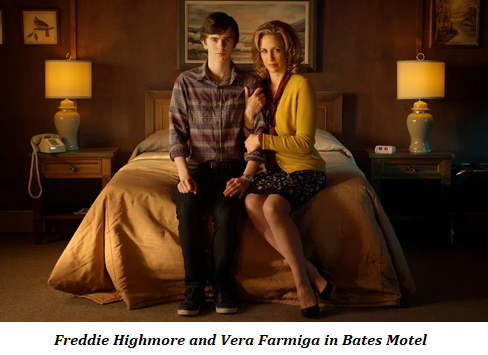
Bates Motel could not exist without Psycho, but soon it could feel like the other way around.
—Ben Travers, IndieWire, February 2017
Legendary film director Alfred Hitchcock had a love-hate relationship with television. While his most enduring masterpieces were all made for the cinema, between 1955 and 1965 he created and hosted 268 twenty-five-minute television episodes of Alfred Hitchcock Presents and ninety-three fifty-minute episodes of The Alfred Hitchcock Hour, personally directing seventeen episodes of the former series, but only one of the latter. He once said, about the relatively new medium:
Television has brought back murder into the home—where it belongs … Seeing a murder on television can help work off one’s antagonisms. And if you haven’t any antagonisms, the commercials will give you some.
Bates Motel (2013–2017) is an outstanding contemporary television prequel—stretching over five seasons—to Hitchcock’s most controversial and arguably greatest film, Psycho.
Joe Dolce’s reviews appear in every Quadrant.
Click here to subscribe
Whereas the original film tells the story of motel manager and psychotic murderer Norman Bates and his relationship with his deceased mother, Bates Motel delves into the backstory of Norman, his co-dependent mother Norma, and introduces his stepbrother Dylan, Norma’s estranged brother Caleb, and a brilliant ensemble of compelling characters.
In Psycho, based on the novel by Robert Bloch, we first meet Norman Bates, played by Anthony Perkins at the motel he manages, Bates Motel, when a Phoenix realtor, Marion Crane (played by Janet Leigh), stops there for the night during a rainstorm. She has stolen $40,000 from her employer, and is on the run to California to meet her boyfriend, Sam.
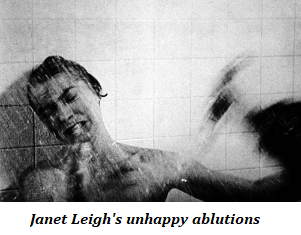 After a chat with Norman over dinner, Marion decides to return the money to her employer but that night she is stabbed to death by a mysterious figure while showering and her body and car are disposed of in a nearby swamp. A private investigator, hired by Marion’s sister Lila (Vera Miles), arrives at the motel inquiring about her disappearance and demands to speak to Bates’s mother, but he is also murdered by the same shadowy figure.
After a chat with Norman over dinner, Marion decides to return the money to her employer but that night she is stabbed to death by a mysterious figure while showering and her body and car are disposed of in a nearby swamp. A private investigator, hired by Marion’s sister Lila (Vera Miles), arrives at the motel inquiring about her disappearance and demands to speak to Bates’s mother, but he is also murdered by the same shadowy figure.
When Lila and Sam do not hear back from the investigator, they arrive at the motel and discover the mummified corpse of the mother in the basement. Bates suddenly appears, wearing a wig and his mother’s dress, brandishing a large knife. Sam overpowers him and the police are summoned.
During Bates’s trial a court psychiatrist, Dr Steiner, explains briefly that Norman murdered his mother over a decade ago and his guilt created an “alternate personality” beyond his control. Bates is judged insane and confined to a mental hospital.
In 1998, the film critic Roger Ebert wrote:
For thoughtful viewers, however, an equal surprise is still waiting. That is the mystery of why Hitchcock marred the ending of a masterpiece with a sequence that is grotesquely out of place. After the murders have been solved, there is an inexplicable scene during which a long-winded psychiatrist … lectures the assembled survivors on the causes of Norman’s psychopathic behavior. This is an anticlimax taken almost to the point of parody.
No backstory about Norman is provided in the movie, until briefly, during his trial, in this closing sequence.
Psycho was made long before self-help shows like Dr Phil analysed everyone’s childhood motivations for their every dark deed. Hitchcock was never interested in this kind of analysis. He once said, “When an actor comes to me and wants to discuss his character, I say, ‘It’s in the script.’ If he says, ‘But what’s my motivation?’ I say, ‘Your salary.’”
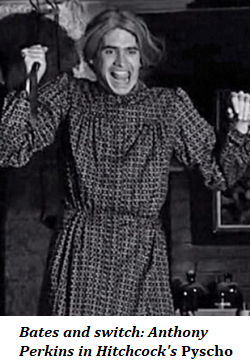 Janet Leigh’s murder in the shower constitutes one of the most famous scenes in cinema history. Seventy-seven different camera angles were used. Bernard Herrmann’s sharp, thrusting score in this sequence is unforgettable—the most powerful and recognisable short musical motif in film until John Williams’s two-note Jaws theme.
Janet Leigh’s murder in the shower constitutes one of the most famous scenes in cinema history. Seventy-seven different camera angles were used. Bernard Herrmann’s sharp, thrusting score in this sequence is unforgettable—the most powerful and recognisable short musical motif in film until John Williams’s two-note Jaws theme.
Hitchcock said:
As you know, [in those days] you could not take the camera and just show a nude woman, it had to be done impressionistically. So, it was done with little pieces of film, the head, the feet, the hand, etc. In that scene, there were seventy-eight pieces of film in about forty-five seconds.
I recall hearing that Leigh asked him about the kind of feeling she should communicate while walking down a staircase and he told her he wasn’t interested in what she was feeling, she just had to start at her mark at the top of the stairs and walk down to her mark at the bottom. The acting in between was her business. He didn’t like directing actors and advised her:
I hired you because you are a talented actress! I will only direct you if A: you attempt to take more than your share of the pie, B: you don’t take enough, or C: if you are having trouble motivating the necessary timed movement.
He confessed, “The best actor is the man who can do nothing extremely well … Cary Grant is the only actor I ever loved in my whole life.”
A master of light, shadow, perspective and suspense, Hitchcock felt those things ought to be communicated without dialogue whenever possible: “If it’s a good movie, the sound could go off and the audience would still have a perfectly clear idea of what was going on.” He had enjoyed a successful career directing silent films and felt that “silent pictures were the purest form of cinema”. He encouraged Perkins and Leigh to interpret their roles freely— as long as it didn’t involve moving the camera.
There have been five sequels to Psycho, known as the “Psycho Franchise”: Psycho II (1983), Psycho III (1986), Bates Motel (1987), Psycho IV: The Beginning (1990)—an earlier prequel, with a screenplay by Joseph Stefano, author of the original screenplay—and Psycho (1998), directed by Gus Van Sant, in a shot-for-shot colour interpretation of Hitchcock’s original, using most of Stefano’s original script and Herrmann’s score. Perkins reprised his role as Norman Bates in II, III and IV, directing the latter as well, and Vera Miles returned to play Lila in II. All five versions were critical and commercial failures.
The extraordinary five-season mini-series Bates Motel is a completely different creature. It takes place in the present time, but the motel, the famous Gothic house-on-the-hill and all the interior sets have been recreated.
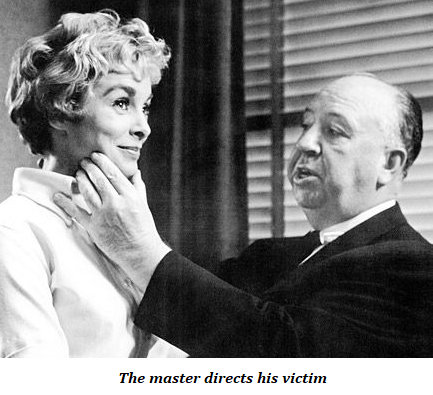
In the first season of the series, seventeen-year-old Norman (played by Freddie Highmore) and his mother, Norma (Vera Farmiga) buy the Seafarer Motel in White Pine, Oregon, and rename it Bates Motel. Her husband has died and she wants a new start in life. The previous disgruntled owner, who lost the motel due to a bank foreclosure, breaks in and rapes Norma, but she stabs him to death. Afraid that alerting the authorities will create damaging publicity for their new business, Norma and Norman secretly dispose of the corpse.
The man is reported missing and his friend, Sheriff Alex Romero, pays a visit to the motel and becomes suspicious. Norman has now started school and befriends the most popular girl there, Bradley. They have sex, but Bradley regrets it afterward. Norma’s estranged son from a previous marriage, Dylan, arrives and asks to stay with them.
Norman and another of his classmates, Emma, who has cystic fibrosis, stumble on a large marijuana field on the outskirts of town and realise the town is the centre of an illegal drug trade and the police are complicit. Dylan begins working for the marijuana growers. Sheriff Romero arrests Norma, accusing her of the murder of the previous owner, but the key evidence against her vanishes. Norma reveals to Norman that while he was in a blacked-out state he killed his father, and that she has kept this truth from him. Emma begins working at the motel and develops a crush on Norman, but he is still in love with Bradley. Emma’s father teaches Norman the art of taxidermy (which he will later put to sinister use). Norma confides to Norman that her brother, Caleb, raped her when she was thirteen. Norman visits his flirtatious teacher, Miss Watson, at her home, sees her naked and has sex with her. She is later found with her throat cut.
The subsequent four seasons of the series follow the same pattern of numerous strong sub-plots revolving around Norman’s deteriorating state of mind. At the end of the fourth season, in desperation, he tries to kill Norma and himself with carbon monoxide, but only succeeds in killing her and thus intensifying his own insanity. In the fifth season he keeps her preserved corpse in a shrine in the basement, and we gradually move to the action of the 1960 film, with some embellishments and variations (including the “shower scene”, which we have been waiting for since episode one, which the director handles in an unexpected and bold way). Eventually, Dylan forces Norman to confront reality—that Norma is dead—but Norman attacks him with a knife. Dylan reluctantly shoots him in self-defence. As Norman dies, he thanks Dylan for allowing him to reunite with his mother. It is an incredibly moving ending.
Ben Travers, of IndieWire, wrote:
Everything that makes Bates Motel great connects to what initially fascinated us about Psycho. The sick, twisted, inner sanctum of the motel and its manager have been beautifully expanded upon, with every addition built on the ever-so-important foundation: character. Freddie Highmore’s take on Norman Bates feels like an honest precursor to Anthony Perkins’. We can believe one would become the other.
Sir Alfred Hitchcock, born in 1899, started his career as a copy writer for a telegraph company. After achieving success as a film-maker in Britain, he moved to Hollywood in 1939, signing a seven-year contract with movie mogul David O. Selznick. Selznick said Hitchcock was the only director that he would trust with a film, but was irritated by his continual “goddamn jigsaw cutting”.
Much has been written about the “master of suspense”, but one of his seldom acknowledged skills was the art of the quotable quote, much in the style of Oscar Wilde or Winston Churchill. Some of his insightful observations were “self-plagiarism is style” and “the more successful the villain, the more successful the picture”. On film-making, he remarked:
I don’t give a damn what the film is about. I am more interested in how to handle the material so as to create an emotion in the audience. I find too many people are interested in the content. If you were painting a still life of some apples on a plate, it’s like you’d be worrying whether the apples were sweet or sour. Who cares?
Paramount Films originally felt Psycho was “too repulsive” and didn’t want Hitchcock to make it, so he produced and financed it himself. Ebert wrote:
Hitchcock deliberately wanted Psycho to look like a cheap exploitation film. He shot it not with his usual expensive feature crew (which had just finished North by Northwest) but with the crew he used for his television show. He filmed it in black and white. Long passages contained no dialogue. His budget, $800,000, was cheap even by 1960 standards; the Bates Motel and mansion were built on the back lot at Universal. In its visceral feel, Psycho has more in common with noir quickies like Detour than with elegant Hitchcock thrillers like Rear Window or Vertigo.
Twenty directors and seventeen writers worked on the fifty episodes of Bates Motel. It sounds like an awful lot of chefs in the kitchen, but this only makes the achievement of Bates Motel all the more remarkable. It is the first time, as far as I am aware, that any director has successfully expanded one of Hitchcock’s prime visions. This is especially true of the character of Norman Bates.
In the series and the original movie, Bates is an evolution of the character of Eve in the 1957 film Three Faces of Eve, based on the true story of Christine Costner Sizemore, who was diagnosed in the 1950s with multiple personality disorder. Sizemore’s three distinct personalities—Eve White, Eve Black and Jane—were unaware of each other. Joanne Woodward won the Academy Award for Best Actress for her portrayal of this disturbed woman.
Robert Bloch could have been aware of Three Faces of Eve when he wrote Psycho. There is a passage at the end of the novel where the psychiatrist, Dr Steiner, says Bates had a three-facet personality disorder: Norman (little boy), Norma (mother) and Normal (the adult functioning man). Hitchcock would certainly have known about Three Faces of Eve when he decided to film Bloch’s novel.
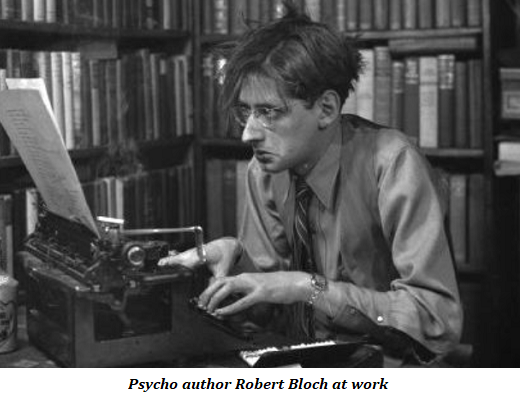
But the character of Norman Bates in Bloch’s novel is completely different from the interpretations of either Anthony Perkins or Freddie Highmore. Bloch’s Bates is overweight and unsympathetic; Perkins and Highmore are lean, good-looking and, in Highmore’s case, extremely endearing.
In the book, Bates looks in the mirror and sees “the blubbery fat, the short hairless arms, the big belly, and underneath it …” He says he wishes he was “tall, lean and handsome”—like Perkins or Highmore.
Bloch’s version of Bates drinks heavily (Scotch whisky, not American whiskey), and the mother persona takes control only when he’s drunk and blacks out. Bates is interested in spiritual matters, the occult, and his library contains works by Einstein, Aleister Crowley and Ouspensky, with titles including The Extension of Consciousness, Justine, The Witch-Cult in Western Europe and Dimension and Being. These aspects were eliminated from his character in the screenplays.
Bloch said: “Norman Bates didn’t exist until I made him up. Out of my own imagination, I add, which is probably the reason so few offer to take showers with me.” I suspect Bloch was influenced by William Faulkner’s brilliant 1930 short story, “A Rose for Emily”. In Faulkner’s story, when the elderly and reclusive grey-haired Emily dies, an inspection of her house reveals the remains of a lover who people had assumed had simply left town.
Bloch’s sequel novel, Psycho II (1982), is completely different from the 1983 filmed sequel. In the novel, Bates, who has been confined to a mental asylum, escapes in an attempt to stop a Hollywood film being made of his life. The novel was intended to criticise the trend of Hollywood splatter films, but critics called it too weird to translate into film.
Bates’s psychiatrist, Dr Adam Claiborne, receives a script from Hollywood producer Marty Driscoll, of Enterprise Productions, seeking approval for a film, Crazy Lady, based on the Bates case. The psychiatrist queries the appropriateness of “cheap sensationalism” on such sensitive issues:
“Hollywood’s the prostitute,” Claiborne said … “don’t you see? It’s the syndrome of entertainment. Film itself prostitutes to audiences. The very way in which it advertises is pandering—come rape me, get your kicks, I’m here to rent myself for your enjoyment in the dark, I invite you to unleash your wildest fantasies of lust, murder, revenge. I lure you to identify with sadists, sociopaths, the polymorphically perverse, tempt you with dreams of destruction.”
Bates escapes from the asylum, killing a nurse, but the escape van is found torched, with two unidentifiable burnt bodies in it. Sam Loomis (the boyfriend of Mary/Marion, in the original film/novel), is now married to her sister, Lila. Both were survivors of the first Psycho, and Bates has always felt that they were “loose ends”—if he had handled them correctly, he wouldn’t be in the institution. Both of them are murdered.
The film’s producer, Marty Driscoll, is found decapitated, his head left on a butcher’s block, but the actual killer turns out to be Bates’s psychiatrist from the institution, Dr Claiborne, who became obsessed with Bates while treating him. We discover the real Norman Bates died in the burnt-out van. Claiborne reflects on his “mission”: “Adam Claiborne. Adam, the first man. Claiborne, born of clay. God created him. Norman Bates will never die.”
Dr Steiner, the psychiatrist who testified at the original Bates trial, again closes the story, with his own analysis:
That’s what happened when you saw the body in the van. As Norman, you went on to Fairvale and killed the Loomises … prompt[ing] your trip to Hollywood. As Claiborne, you had rational reasons for trying to stop the film.
There is a subtle nod to the plot of this novel in the fourth episode of the final season of Bates Motel, when the eccentric Chick is observed working at his typewriter on a “suspense” novel about the Bates family. He comments, “I think, in the right hands, when it’s completed, it’ll make quite a good little movie.”
Robert Bloch (1917–1994) was a protégé of H.P. Lovecraft, and when Lovecraft died in 1937, the twenty-year-old Bloch said: “Part of me died with him, I guess, not only because he was not a god, he was mortal, that is true, but because he had so little recognition in his own lifetime.”
Bloch survived as a working writer throughout the 1930s and became president of the Mystery Writers of America, a member of Science Fiction Writers of America, the Writers Guild of America, the Academy of Motion Picture Arts and Sciences and the Count Dracula Society. Over a long career, he was the author of thirty novels and also wrote ten episodes of Alfred Hitchcock Presents, eight episodes of The Alfred Hitchcock Hour, three scripts for the original Star Trek series and published a collection, collaborating with Ray Bradbury, Bloch and Bradbury.

Hitchcock once said, “To make a great film you need three things—the script, the script and the script.” The directors on Bates Motel were guided by the extraordinary screenplays of the writers and producers, Kerry Ehrin, Carlton Cuse and Anthony Cipriano.
Lead writer Kerry Ehrin penned the scripts for twenty-four episodes. In an interview with Marcus Dixon, Ehrin said Emily Bronte’s novel Wuthering Heights inspired the way she approached Bates Motel—an “unnatural love that couldn’t really exist in the normal world”, especially the ending, where Norman regains his mother in death. Wuthering Heights ends, “I … wondered how any one could ever imagine unquiet slumbers for the sleepers in that quiet earth.” Ehrin says, “It’s not a happy ending but it’s a darkly romantic ending … a Gothic ending”, staying true to the spirit of Hitchcock, who suggested “filming murders like love scenes, and love scenes like murders”.
When asked if she thought Hitchcock would like her version, she hesitated and then said yes. However, while Hitchcock certainly would have related to the emotion and high suspense aspects of Bates Motel, he would have been sorely disappointed at the cinematography, which contains none of his masterly light, shade and technical wizardry. Hitchcock once told Francois Truffaut, “It wasn’t a message [in Psycho] that stirred the audiences, nor was it a great performance … they were aroused by pure film.”
English actor Freddie Highmore began his career when he was twelve years old, appearing in Finding Neverland and Charlie and the Chocolate Factory, winning two Critics Choice Awards for Best Young Performer. He attended Cambridge University, taking a double first in Spanish and Arabic.
Highmore began Bates Motel when he was seventeen years old and, by the time the fifth season concluded, he was twenty-four. Before each season of the series he re-watched Hitchcock’s Psycho to remind himself where he was going with the character.
He made an interesting comment to Amber Dowling of the Hollywood Reporter: “I know it isn’t a comedy, but at those times I feel like it is; Norman’s just talking to himself, his dead mother next to him. It’s all too much.” Highmore understood Hitchcock’s intentions more than he realised. Hitchcock once said, “To me Psycho was a big comedy. Had to be.”
There’s one minor hiccup for me in Highmore’s portrayal of Bates. In the original Psycho, in both the novel and the film, Bates has practically no interaction with women, and no sex life. He is a deeply repressed man. But in Bates Motel, Bates has sex with three gorgeous women: Bradley, Miss Watson and Cody, a girlfriend introduced in the second season. Women are drawn to him. I can’t understand how a person who has that much sex appeal to women can have enough repressed hatred to want to kill them. Unless the writers were drawing a bit from Ted Bundy, who was also debonair and good-looking, and who Stephen Michaud, in his book The Only Living Witness: The True Story of Serial Killer Ted Bundy, wrote: “Ted lured females the way a lifeless silk flower can dupe a honey bee.”
In Hitchcock’s Psycho there were only two women: Marion Crane, murdered in the famous shower scene, and her sister, Lila, who arrives later, looking for her. Both are minor characters.
But all the great contemporary television series have had large ensemble casts of primary women characters: Rome and Big Little Lies, for example, and just about every one of the extended British period dramas, such as The Forsyte Saga, Cranford and Downton Abbey. The women in Bates Motel are legion, including Norma, Emma, Bradley, Cody and a dozen others.
Vera Farmiga, the Ukrainian-American actress who plays Norma, did not learn English until she was six years old. She is a semi-professional folk dancer and a classical pianist. In the final season of Bates Motel she appears in every episode—even though her character is dead! Travers commented:
[Vera] Farmiga is off the chain … a consistent delight throughout the series, but now, free from the moral tortures of the living, she’s relishing the opportunity to go full-on nutbag with Norma. It’s a subtle shift fitting Norman’s slightly off-kilter perception of his mother, but one you’ll adore once you notice it.
In Bates Motel, the repressed trauma that resulted in Norman’s fragmented self is shown to be directly sourced to the abuse he witnessed his mother suffering at the hands of his violent father. This theme is presented in flashbacks but also in the incestuous relationship between Norma and her brother Caleb, which comes about, first as childhood friendship and sexual intimacy—“all we had was each other”—but which led to Caleb raping her and the birth of their son, Dylan. Not only is Farmiga outstanding in the dual role of Norma, and Norman’s personified version of Norma, but she also sensitively explores the tricky waters of abused child victim and an incestuous sister/mother.
Allen Johnson of the San Francisco Chronicle called Farmiga “the best American actress you’ve never heard of”. For Bates Motel, she was nominated for a Primetime Emmy Award for Best Actress and won a Saturn Award for Best Actress on Television.
She also served as producer and executive producer of seasons two to five of the series. She spoke of her character in an interview with the National Post:
[Norma] isn’t even necessarily Hitchcockian. Yes, she’s a cool blond that, at the outset, appears very lovely, but acts in a very animalistic way when she encounters danger. For me … she was drawn more from Ibsen and Chekhov … I went into this wanting to defend who this woman is … the story is a beautiful love letter between a mother and her son … it’s like the Edvard Munch painting of the Madonna.
Hitchcock once said:
In the old days, villains had moustaches and kicked the dog. Audiences are smarter today. They don’t want their villain to be thrown at them with green limelight on his face. They want an ordinary human being with failings.
 Sign In
Sign In 0 Items (
0 Items ( Search
Search







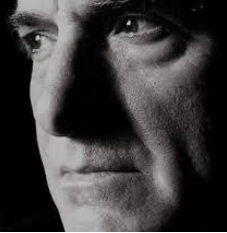


Oh, I fully understand the requirement in any kind of society for the people to be entertained. That is, to have their emotions stoked by external stimuli.
Ditto, I understand the desire people have to eat, as much as they want, more than they need, especially food types that offer an escape from what they imagine to be the terrible constraints of their English heritage (This is Australia).
Circuses and bread eh.
Now here is the great pity, indeed the cause of the hastening collapse of a viable Australia, once a prospective strong member of the Western Alliance, namely:
There are far too few people who understand that to save the joint, they’d have to fight for it, and be prepared to sacrifice their lives, or at least give up their devotion to entertainment and eating and drinking and drugging.
All understandable, and inevitable, this advance into The Anti-Westernist Abyss.
Like many others I don’t watch much TV drama anymore. Modern drama produced in the West is now largely an exercise in ticking boxes. Ethnically and gender diverse cast – tick. At least one major character in a non-heterosexual relationship – tick. Villain easily identifiable by being white and male – tick. Plot revolving around some woke concern like climate change – tick. In the past, individually none of these would have been a concern. However now, as a wholly predictable, unchangeable template, they are irredeemably boring. Why some director believes his or her vanity needs stroking with megaphone virtue signaling is beyond me. Anyone thinking I would want to watch that is kidding themselves. Consequently I haven’t watched the new Bates Motel – It may be excellent, but I’ve watched the first episode of so much rubbish lately I’ve had enough. Despite the subtitles, I now find East Asian drama, with its focus on character and plot, much more entertaining.
YES. The script is the thing. What is written is always simply the guidepost for actors, or readers. Far too many scripts or stories overwrite, providing too much explanatory dialogue for scene setting which takes the imaginative fun out of it; it’s deadening. Good scripts provide just enough information and emotional heft to allow actors or readers to get inside the part. In film, the visual element is part of the script. And how well Hitchcock knew that.
Ian, for jaded spirits, let me recommend the Israeli series FAUDA. Into season four soon, and an unexpected international hit, very tightly scripted and acted. Very un-PC. Tells two sides of an awful ongoing conflict in which you have to like undercover operatives, bands of brothers and lotsa guns: but very compelling stuff with a side-dish of tenderness in both expected and unexpected situations.